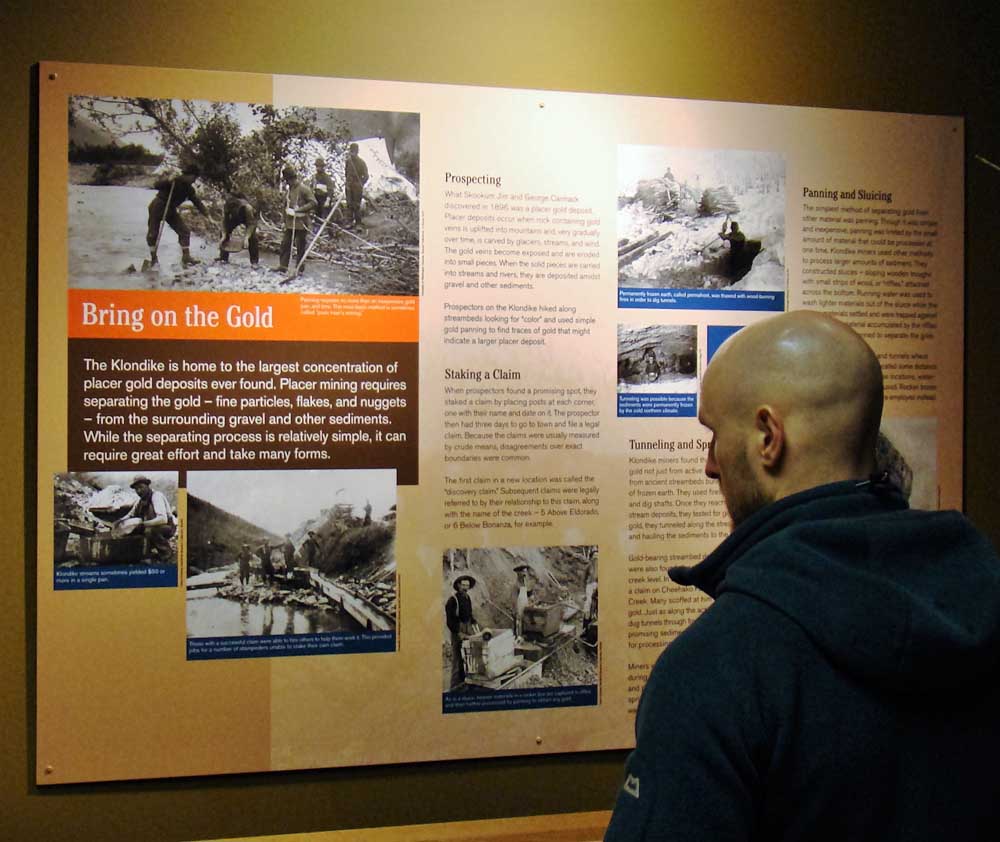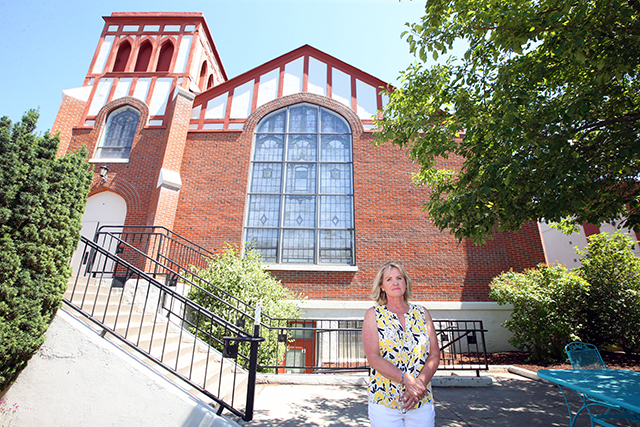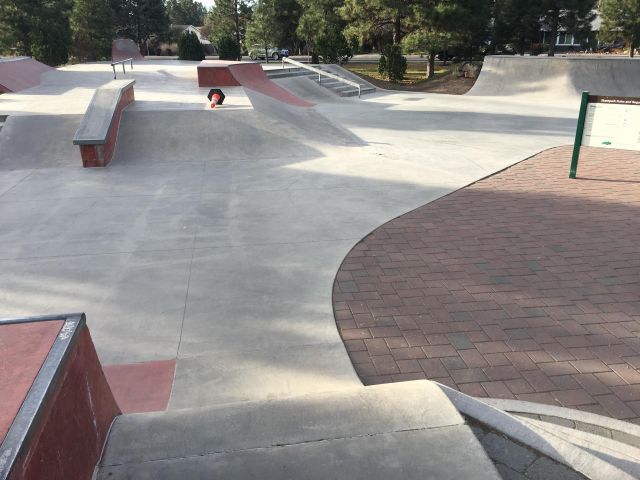National Park lands of the Northwest
Published 12:00 am Sunday, May 22, 2016

- John Gottberg Anderson / For The BulletinA would-be explorer stops to inspect a lava-tube cave at Lava Beds National Monument, southeast of Klamath Falls. There are more than 700 such caves in the California preserve, along with historical remnants of the Modoc Indians and other tribes.
This year marks the 100th birthday of the National Park Service, and throughout its more than 400 units, visitors are being encouraged to find their “unique park experience.”
The experience may be something as simple as taking a boat cruise on Oregon’s pristine Crater Lake — granted, this activity requires a 1-mile hike from the cliff rim to the lakeshore, much more arduous on the ascent than the descent — or hiking through a moss-draped rainforest in Washington’s Olympic National Park.
Trending
The park service was established by an act of Congress and signed into law by President Woodrow Wilson on Aug. 25, 1916. Created as a division of the U.S. Department of the Interior, it immediately assumed management of 11 national parks and 19 national monuments that already had been set aside.
Yellowstone, in Wyoming, was the first in 1872. It was followed by California’s Sequoia and Yosemite (both 1890), Washington’s Mount Rainier (1899), Crater Lake (1902), South Dakota’s Wind Cave (1903), Colorado’s Mesa Verde (1906), Montana’s Glacier (1910), Colorado’s Rocky Mountain (1915), Hawaii and California’s Lassen Volcanic (both 1916).
Today there are 59 national parks, as well as national monuments, recreation areas, historical parks, historic sites, battlefields and military parks, historic trails, scenic rivers and the White House itself. In all, they total more than 84 million acres, or about 3.6 percent of the total land mass of the 50 United States.
The park service employs more than 20,000 full-time, temporary and seasonal workers, as well as nearly 140,000 volunteers.
When President Wilson established the NPS, he mandated that it “conserve the scenery and the natural and historic objects and wildlife therein, (and) provide for the enjoyment of the same in such manner and by such means as will leave them unimpaired for the enjoyment of future generations.” That remains its mission and its challenge today — preserving ecological and cultural integrity while maximizing public access and enjoyment within that framework.
A century later, challenges are legion. Climate change and land development, including new mines just beyond park boundaries, threaten the survival of wildlife. Budget shortfalls have left the NPS with a $9.5 billion maintenance backlog tied to needed improvements for roads, buildings, trails, water and sewer systems.
Trending
And David Barna, director of public affairs for the NPS, recently told National Geographic that a loss of cultural literacy among young Americans compromises the relevance of many parks, which may have been designated for their historical and cultural significance rather than scenic beauty.
Crater Lake National Park
In the Northwest, however, nature is paramount. And Oregon’s only national park, one of the most scenically beautiful places on the planet, needs no introduction to most Central Oregonians.
A drive of fewer than two hours southwest from Bend, Crater Lake is the deepest lake in the United States (1,943 feet). It fills the caldera of ancient Mount Mazama, a massive Cascade peak that collapsed about 7,700 years ago.
Famous for the cobalt blue color and remarkable clarity of its water, Crater Lake boasts remarkable views from its 33-mile Rim Drive that circles the lake. From the historic Crater Lake Lodge, itself more than a century old, visitors may look down upon Wizard Island, a cinder cone that rises from the depths of the lake. Look carefully, and you may see a small cruise boat plying the waters of this volcanic wonder.
Mount Rainier National Park
The highest peak in the Cascade Range at 14,411 feet, Mount Rainier is a dormant (and potentially explosive) volcano, and the most heavily glaciated peak in the United States outside of Alaska. It is covered by 26 named glaciers — including Emmons Glacier, the largest in the continental U.S. — and laced with the world’s largest system of ice caves, with more than two miles of passages. The mountain is a magnet to climbers, while the 93-mile Wonderland Trail winds around the base of the peak through alpine and subalpine forests.
Paradise Inn on the south slope, with its Henry M. Jackson Memorial Visitor Center, is one of the snowiest places in the world. (Last winter’s 268 inches were the fewest on record.) The National Park Inn at Longmire, near the park’s southwest entrance, has year-round lodging and dining, as well as a park museum. The Sunrise Visitor Center, at 6,400 feet on the northeast flank of Rainier, is a great place for summer wildflowers and stargazing.
Olympic National Park
The largest and most visited park in the Northwest is Olympic National Park, a World Heritage Site that welcomes 3.25 million visitors each year. Established in 1938, it dominates the Olympic Peninsula west of Seattle, stretching from Pacific tide pools through dense, temperate rain forest to the rugged peaks of the Olympic Range, nearly 8,000 feet in elevation.
From park headquarters in Port Angeles, a small city on the Strait of Juan de Fuca, visitors may drive the winding road to Hurricane Ridge for spectacular mountain views. West of here, waterfalls tumble to lovely park resorts at Lake Crescent and Sol Duc Hot Springs. The wettest forests in the continental United States assure that old-growth spruce and hemlocks are draped with moss in the Hoh and Quinault rain forests on the west side of the park. Meanwhile, Rialto Beach and the Kalaloch Lodge are highlights of the Pacific shoreline.
North Cascades National Park
No paved roads intrude upon this national park, which extends more than 40 miles south from the Canadian border to Washington’s Lake Chelan National Recreation Area. Divided in two by Ross Lake National Recreation Area, it is perhaps the most thoroughly wilderness national park in the lower 48 states.
Established in 1968, the North Cascades has more than 50 heavily glaciated peaks rising about 6,000 feet, capped by 9,220-foot Goode Mountain. Deep valleys, accented by beautiful waterfalls, are hope to a rich wildlife population. The main access points are at Ross Lake, on the North Cascades Highway (open summers only), and at Stehekin, accessible only by boat or seaplane, at the head of Lake Chelan. Many hikers and horseback riders establish their base at this charming and isolated community.
Redwood State and National Parks
Just across the southwestern Oregon state line, this collaboration of federal and California state parks was designated to preserve 45 percent of all surviving coast redwood forests. The tallest trees on earth, redwoods live from 1,200 to 1,800 years; they have been measured at 379 feet high and 29 feet in diameter. But they were harvested without restriction from the 1850s to the 1920s, when the Del Norte Coast, Jedediah Smith and Prairie Creek Redwoods state parks were established. These have been co-managed with the national park since 1968.
The parks include the estuaries of the Smith and Klamath rivers, along with prairie and forest ecosystems. Miles of hiking trails take visitors to remote groves of the giant trees.
National monuments
Unlike national parks, which preserve expansive wild areas, national monuments are charged with protecting a single unique cultural or natural feature. A perfect example is Wyoming’s Devils Tower National Monument, the first, created in 1906.
Oregon Caves National Monument and Preserve (1909) harbors a system of marble caves deep within the Siskiyou Mountains east of Cave Junction. Formed as rainwater from an ancient forest dissolved the rock layers beneath, the complex was a haven for such prehistoric mammals as grizzly bears and jaguars, whose fossils have been found within. Several guided tours are offered daily from March to November. And the park hotel, the 1934 Oregon Caves Chateau, is a national historic landmark.
Lava Beds National Monument (1925), a short drive southeast of Klamath Falls, features the largest concentration of lava-tube caves in North America: more than 700 in all. Here the Medicine Lake Volcano, a massive shield volcano, has created a remarkably rugged desert landscape where native leader Captain Jack took on the U.S. Cavalry in the Modoc War of 1872-73. Petroglyph Point has a huge panel of Native American rock art. Head lanterns are available at the visitor center for guided or unguided cave exploration.
John Day Fossil Beds National Monument (1974), east of Prineville, is protected for its fossil record of Cenozoic Era plants and animals in the John Day River Basin. The park has three units; best known are its Painted Hills, north of Mitchell, whose colorful stratifications change hue with the weather and time of day. Park headquarters are at Sheep Rock, which has an outstanding paleontological museum and trails into the aptly named Blue Basin area. Clarno is better known for its rare fossilized seeds and plants of long-vanished species.
Historic parks
Klondike Gold Rush National Historical Park is mostly in Skagway, Alaska, where its three sites include the Chilkoot Trail to the Yukon Territory gold fields of the 1890s. But its gateway unit is in Seattle’s Pioneer Square National Historic District. Opened in 1979 and located in the 1889 Cadillac Hotel, this interpretive center and museum relates how gold “stampeders” outfitted themselves for the arduous journey ahead of them.
Lewis and Clark National and State Historical Parks commemorate the winter of 1805-06, when the Corps of Discovery camped near the mouth of the Columbia River in the midst of their cross-country trek. Established in 1958 as Fort Clatsop National Memorial, it was rededicated in 2004 to include several landing sites on the north bank of the Columbia in Washington, and other sites in Oregon. It incorporates state parks in Oregon (Ecola, Fort Stevens, Sunset Beach) and Washington (Cape Disappointment, Fort Columbia).
Manhattan Project National Historical Park has units in Oak Ridge, Tennessee, where the World War II-era atomic bomb was envisioned; Los Alamos, New Mexico, where it was developed and tested; and Hanford, Washington, where it was built. The park was established last November and put under the joint management of the NPS and the U.S. Department of Energy. In Washington, bus tours of the B Reactor National Historic Landmark are available by reservation only.
Nez Perce National Historical Park (1965) comprises 38 widely separated sites in Idaho, Oregon, Washington and Montana. Commemorating the history, culture and stories of the Nez Perce tribe, most sites are on the modern reservation in Idaho, where park headquarters include a museum. Many sites are connected by the Nez Perce National Historic Trail, tracing the Canada-bound route of Chief Joseph and his band as they attempted to escape the U.S. Cavalry in 1877. Among the Oregon sites is the grave of Old Chief Joseph in the Wallowa County town of Joseph.
San Juan Island National Historical Park (1966) has two units on opposite ends of San Juan Island between Anacortes, Washington, and Victoria, B.C. It commemorates the “Pig War,” a border dispute between the United States and England ignited by the killing of a settler’s pig. It fell upon Germany’s Kaiser Wilhelm I to negotiate a treaty in 1871. U.S. soldiers were stationed in American Camp, near Cattle Point, while British marines had a garrison at British Camp, not far from Roche Harbor.
Other sites
Fort Vancouver National Historic Site (1961) includes both the original 19th-century fur-trading post of the Hudson’s Bay Company, in modern-day Vancouver, Washington, and the 1846 McLoughlin House in Oregon City. The fort’s chief factor, Dr. John McLoughlin, retired to Oregon and became known as the “Father of Oregon” for his welcoming ways with Oregon Trail pioneers.
Whitman Mission National Historic Site (1966) recalls the notorious Whitman massacre of 1847. Missionaries Marcus and Narcissa Whitman and 11 others were slain by Cayuse Indians at their mission just west of modern Walla Walla, Washington. The site honors the role the Whitmans played in establishing the Oregon Trail, and the challenges that can result when two cultures clash.
Minidoka National Historic Site (2001) honors more than 9,000 Japanese Americans imprisoned during World War II at the Minidoka War Relocation Center on the arid Snake River Plain northeast of Rupert, Idaho. In 2008 it incorporated the Japanese American Exclusion Memorial on Seattle-area Bainbridge Island, at the former ferry dock from which the first internees were evacuated.
Ebey’s Landing National Historical Preserve (1978) traces the historical record of the Puget Sound area from its first visit by Captain George Vancouver in 1792. Land-use patterns haven’t changed much since the area was settled in the 1850s by Colonel Isaac Ebey. The reserve include the nearby seaport community of Coupeville and Fort Casey and Fort Ebey state parks.
Also under NPS administration are the Lake Roosevelt National Recreation Area and the Ice Age Floods National Geologic Trail, both in northeastern Washington, and the Oregon, California and Lewis and Clark national historic trails.
Agency love
Additional national conservation lands are administered by other agencies.
In the Pacific Northwest, the U.S. Forest Service oversees the Mount St. Helens and Newberry national volcanic monuments, the Oregon Dunes and Hells Canyon national recreation areas, and the Columbia River Gorge National Scenic Area.
The Bureau of Land Management controls 25 national monuments in nine Western states, including Oregon’s Cascade-Siskiyou National Monument, just north of the California border east of Ashland, and Washington’s San Juan Islands National Monument.
The U.S. Fish & Wildlife Service is the administrative agency for the Hanford Reach National Monument near Washington’s Tri-Cities, as well as every national wildlife refuge. Of these, there are 21 in Oregon, including the Hart Mountain National Antelope Refuge, and 24 in Washington.
— Reporter: janderson@bendbulletin.com
Editor’s note: This article has been corrected. The original version misstated the agency in charge of the U.S. Forest Service. The Bulletin regrets the error.








